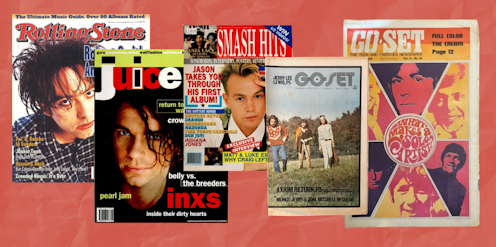The rise and 'whimper-not-a-bang' fall of Australia's trailblazing rock press
- Written by David Nichols, Professor of Urban Planning, The University of Melbourne

People under 30 don’t need to care about – or even understand – this. But there really was a time when exposure to culture was mediated by curators who had far too much power over what we all saw, heard or experienced.
In the era before social media and widespread internet access, artists had no direct connection to their fanbases, and required whole distinct manifestations of media to communicate news of their activities, directions and products.
We had a film press, a television press, a literary press – and a music press.
Review: Full Coverage – Samuel J. Fell (Monash University Press)
I needed to read Samuel J. Fell’s Full Coverage[1], the first (and surely only) ever history of Australia’s rock press, for selfish reasons: I consider my tastes and values to have been significantly shaped by the phenomenon.
Over 300 pages, Fell surveys the development of local rock music coverage in (mainly national) magazines, stopping to inspect some of the eccentric and/or dedicated writers, editors and publishers who made the greatest impact along the way.

















